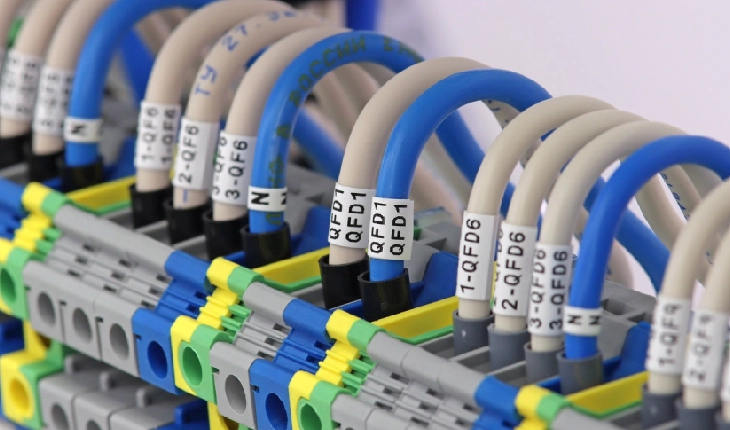
In every industry, labels do more than just display information—they help keep things organized, improve safety, and ensure compliance with important standards. Whether they’re used for inventory, equipment, product identification, or safety signage, durable labels are essential for an effective and lasting organization. But picking the right label isn’t as simple as it might seem. Key factors like material quality, resistance to different environmental conditions, and adherence to regulatory standards are vital to make sure labels can stand the test of time. In this blog, we’ll explore what to consider when choosing durable labels, so you can make the best choice for your needs.
Durable labels are made to handle tough conditions and keep looking sharp and readable, even when faced with wear and tear. These labels are created from materials that can stand up to scratches, high and low temperatures, chemicals, and moisture. When choosing the right durable label, start by thinking about where and how it will be used. Consider the surfaces it will stick to, the environment it will be in, and any regulatory standards it needs to follow. This groundwork helps ensure you pick a label that’s up for the job, no matter the conditions.
The durability of a label starts with the materials it’s made from. Here are some common options:
Labels that face extreme conditions—like high temperatures, sunlight, or exposure to chemicals—need to be tough enough to withstand these challenges. UV-resistant labels, for instance, won’t fade easily, so they stay readable even in direct sunlight. Heat-resistant labels hold up in hot environments, like manufacturing plants, while water-resistant labels are essential for humid or wet settings. By choosing labels designed to meet these specific conditions, you ensure they stay clear and effective, no matter where they’re used
In industrial environments, labels often have to withstand contact with chemicals and regular wear from handling. Abrasion-resistant labels are built for this—they stay clear and readable even after being handled or cleaned repeatedly. For settings like labs, hospitals, and factories, where exposure to strong chemicals is common, chemical-resistant labels are a must. These labels are designed to hold up in tough conditions, ensuring important information remains visible and intact.
In Australia, industries have strict standards for labelling, especially for products and equipment.
Work Health and Safety (WHS) Regulations: Similar to OSHA, WHS guidelines require specific colors, symbols, and placement for safety signs and labels in workplaces, ensuring important information is clearly visible.
AS/NZS Standards: The Australian/New Zealand Standards (like AS/NZS 1319 for safety signs) provide guidelines for labelling in various sectors, from electrical equipment to chemical storage, to ensure compliance with local regulations.
UL Certification: While UL certification is globally recognized, Australian-specific certifications, like those from Standards Australia, are often needed to confirm that labels meet safety standards for equipment.
RoHS and REACH Compliance: Australia also aligns with international environmental standards to ensure that labels and materials are free from hazardous substances, helping businesses meet local and global environmental regulations.
Working with a label provider who understands Australian standards ensures that your labels are compliant and help keep workplaces safe, avoiding potential penalties and supporting regulatory peace of mind.
A label’s design plays an important role in its effectiveness. Clear, legible fonts, high-contrast colors, and easily recognizable symbols make information accessible at a glance. For more complex information, sequential QR codes or barcodes provide quick access to data, inventory status, or maintenance records. Customization also allows you to incorporate branding elements like logos while maintaining compliance and readability.
The lifespan of your labels is heavily influenced by the printing technology used. High-quality methods, like thermal transfer and digital UV printing, ensure that your labels stay sharp, vibrant, and easy to read over time. Fade-resistant inks and protective coatings can also enhance durability, keeping labels effective and looking good throughout their use.
When selecting a label provider, look for a partner who understands the unique needs of your industry and can offer quick turnaround times, reliable support, and flexible customization options. Working with an experienced provider like EvolvX ensures you receive labels that are not only durable but also meet all necessary industry standards. EvolvX provides a wide range of options, from QR-coded labels to heavy-duty tags, designed to handle the toughest demands across different sectors.
Durable labels are a smart investment in safety, efficiency, and compliance. By choosing the right materials, ensuring they resist environmental and physical wear, meeting regulatory standards, and customizing for clarity, you’ll have labels that perform well and look professional. With EvolvX’s expertise in supplying durable, high-quality labels, you can strengthen both the safety and the professional image of your business. Quality matters when it comes to durable labels, and now you’re equipped with the knowledge to make informed choices that bring lasting value.